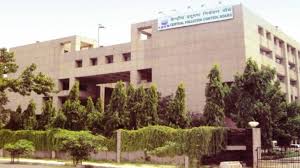CENTRAL POLLUTION CONTROL BOARD
INTRODUCTION
The Central Pollution Control Board (CPCB) is a statutory organization, serves as a field formation and also provides technical services to the Ministry of Environment and Forests of the provisions of the Environment (Protection) Act, 1986. It was constituted in September, 1974 under the Water (Prevention and Control of Pollution) Act, 1974. Further, CPCB was entrusted with the powers and functions under the Air (Prevention and Control of Pollution) Act, 1981. It coordinates the activities of the State Pollution Control Boards by providing technical assistance and guidance and also resolves disputes among them.
PRINCIPAL FUNCTION
In short, the CPCB has broadly following functions.
- To promote cleanliness of streams and wells in different areas of the States by prevention, control and abatement of water pollution,
- To improve the quality of air and to prevent, control or abate air pollution in the country.
Air Quality Monitoring
It is an important part of the air quality management. The National Air Monitoring Programme (NAMP) has been established with objectives to determine the present air quality status and trends and to control and regulate pollution from industries and other source to meet the air quality standards. It also provides background air quality data needed for industrial siting and towns planning. Besides this, CPCB has an automatic monitoring station at ITO Intersection in New Delhi. At this station Resirable Suspended Particulate Matter (RSPM), Carbon Monoxide (CO), Ozone (O3), Sulphur Dioxide (SO2), Nitrogen Dioxide (NO2) and Suspended Particulate Matter (SPM) are being monitored regularly. This information on Air Quality at ITO is updated every week.

FUNCTION AT NATIONAL LEVEL
- Advise the Central Government on any matter concerning prevention and control of water and air pollution and improvement of the quality of air.
- Plan and cause to be executed a nation-wide programme for the prevention, control or abatement of water and air pollution;
- Co-ordinate the activities of the State Board and resolve disputes among them;
- Provide technical assistance and guidance to the State Boards, carry out and sponsor investigation and research relating to problems of water and air pollution, and for their prevention, control or abatement;
- Plan and organize training of persons engaged in programme on the prevention, control or abatement of water and air pollution.
- Organise through mass media, a comprehensive mass awareness programme on the prevention, control or abatement of water and air pollution;
- Collect, compile and publish technical and statistical data relating to water and air pollution and the measures devised for their effective prevention, control or abatement;
- Prepare manuals, codes and guidelines relating to treatment and disposal of sewage and trade effluents as well as for stack gas cleaning devices, stacks and ducts;
- Disseminate information in respect of matters relating to water and air pollution and their prevention and control;
- Lay down, modify or annul, in consultation with the State Governments concerned, the standards for stream or well, and lay down standards for the quality of air.
ORGANISATIONAL STRUCTURE
The CPCB is headed by its chairman and then member secretary follows. The CPCB performs its various functions through the following nine major project\ budget heads.
- Pollution assessment (survey and monitoring).
- R&D and laboratory management.
- Development of standards and guidelines for industry specific emissions and effluents standards
- Training
- Information database management and library
- Pollution control technology
- Pollution control enforcement
- Mass awareness and publications
- Hazard waste management
ESSAY ON ENVIRONMENTAL POLLUTION
WHAT IS ECOLOGY- OVERVIEW & TYPES
RED DATA BOOK- OVERVIEW & CONSERVATION CATEGORY
ECOLOGICAL PYRAMID- DEFINITION & TYPES
HYDROLOGIC CYCLE-OVERVIEW & PROCESSES
ENERGY FLOW OF ECOSYSTEM
TYPES OF THE ECOSYSTEM